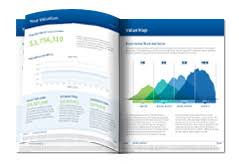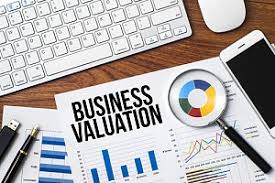If you are like many business owners, you tend to get caught up in the daily demands of your business: managing sales and production, costs, and the bottom line. What about preservation and protection? Perish the thought, but what would happen to your company if it was unable to carry on due to your death or disability?
These concerns may seem like, and may in fact be, remote possibilities. However, by putting them off, you may be placing the future of your business, and its shareholders and their families, at risk. Once death or disability strikes, it will be too late to plan. Your company’s continuing operations could be severely damaged, permanently affecting your family, partners, employees, and others who may depend on it for their livelihood. If you’re like many business owners, you may assume that, if disaster struck, your family could simply sell the company. But, to whom would they sell and at what price? And what if otherwise capable buyers did not have sufficient cash for the purchase? A buy-sell agreement helps provide answers to these and many more questions.
What is a Buy-Sell Agreement?
Briefly, a buy-sell is a legal contract that guarantees a buyer for your business, and provides a means of funding the purchase. You typically negotiate a buy-sell with partners, shareholders, the management team, or key employees. The agreement commits them to buy out your share of the business if you die or become disabled. The process for valuing the company is agreed upon up-front, when the deal is struck. Life insurance and disability insurance are often used to provide the necessary funding.
Your family benefits by automatically having a cash buyer for the business. Your buyer benefits by being able to continue operations without fear of interference from outsiders who are unfamiliar with the business.
The Basics of Setting One Up
An insurance professional usually plays a key role in structuring a buy-sell. Ideally, your representative should have extensive experience in business succession planning. You may also require legal, tax, and accounting assistance, depending on the complexity of the agreement.
In many cases, funding a buy-sell agreement with both life and disability insurance may be the best way to proceed. The life insurance policy can either be term or have a cash value component. A term policy provides the largest death benefit for the least cost; however, it will only cover the buy-sell itself. If you want the insurance to provide other benefits, such as supplementing your pension or providing funds to buy out a partner, you will need a cash value policy. Disability insurance is particularly important, since the chances of becoming disabled are statistically greater than the chances of dying before age 65. However, insurability will depend on your occupation, health, and age.
One Company’s Approach
Consider the benefits of a buy-sell agreement, in the following hypothetical example. Barbara Smith, Mary Jones, and Tom Altuve are partners in a computer services company. Barbara owns the majority interest, while Mary and Tom are minority shareholders. Recognizing the importance of guaranteeing the company’s long-term survival, they consult an insurance professional, who, over the course of several months and with assistance from the company’s lawyers and accountants, develops a buy-sell agreement.
Twelve insurance policies are written to fund the buy-sell agreement, two life and two disability insurance policies per partner. Both life insurance policies are payable to the business. One policy will provide funds to buy out a deceased partner’s interest, while the other will pay the costs of recruiting a replacement. Of the two life policies, one is a term policy, while the other is a cash value policy. The cash value policy can be used to provide supplemental pension income in the event the partner retires. Of the two disability policies per partner, one is payable to the partner, while the other is payable to the company. The partner’s policy will provide him or her with income in the event of disability; the company’s policy will provide funds that can be used to buy out a disabled partner’s share.
Clearly, a buy-sell agreement can be complex and does not come cheaply, since it needs to be tailored to your company and your shareholders. However, it may help you sleep more easily at night, knowing that your family, and others who depend on your business, will continue to benefit from the company you worked so hard to build.

 Detailed and Summary valuation reports can only result from a full valuation analysis, not a limited scope analysis. A Summary report covers the same topics as a Detailed report but in less detail. Both sufficiently document the facts, data and information relied upon and the assumptions and analyses made, so that the conclusions reached can be clearly understood by intended users (shareholders for example) and withstand adverse scrutiny by the IRS, DOL, SEC, trier of fact, opposing expert or other third party.
Detailed and Summary valuation reports can only result from a full valuation analysis, not a limited scope analysis. A Summary report covers the same topics as a Detailed report but in less detail. Both sufficiently document the facts, data and information relied upon and the assumptions and analyses made, so that the conclusions reached can be clearly understood by intended users (shareholders for example) and withstand adverse scrutiny by the IRS, DOL, SEC, trier of fact, opposing expert or other third party. Buy-sell agreements that contain a clause that values stock at less than fair market value can be disregarded for tax purposes. It is important to consider the requirements of
Buy-sell agreements that contain a clause that values stock at less than fair market value can be disregarded for tax purposes. It is important to consider the requirements of  You are getting ready to sell your business so you must ask yourself some questions: When do I want to exit? Who are the most likely buyers? Is my business adequately prepared to sell? How does it compare to other like businesses? And of course, what’s my business worth?
You are getting ready to sell your business so you must ask yourself some questions: When do I want to exit? Who are the most likely buyers? Is my business adequately prepared to sell? How does it compare to other like businesses? And of course, what’s my business worth?

